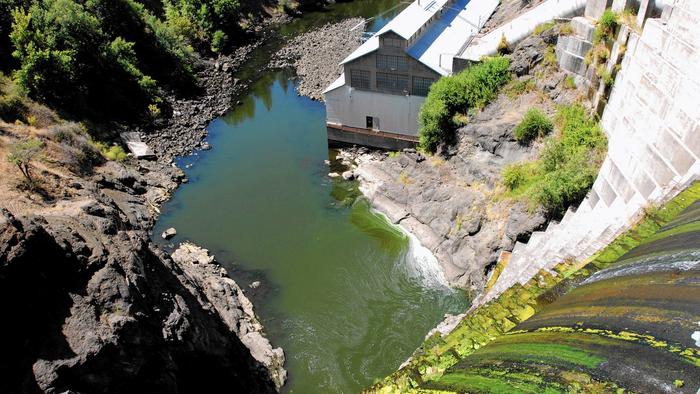Five years after a high-profile deal was struck to remove four hydroelectric dams and improve conditions on one of the West Coast’s prime salmon rivers, the agreement is on the verge of collapse for lack of action by Congress.
A crucial part of the Klamath River pact expires Dec. 31, 2015 unless Congress approves it, which appears less likely with each passing day because of Republican opposition.
The 2010 deal — backed by the dams’ owner, PacifiCorp, along with the states of California and Oregon and the federal government — was hailed as the path to peace on a river that has long been marked by strife between tribal, agricultural and fishery interests.
But its death wouldn’t stop campaigns to decommission the dams that block historical salmon rearing and spawning grounds on the river’s upper reaches.
“It’s not the end,” said Rep. Jared Huffman (D-San Rafael), whose congressional district includes the lower Klamath. “If anything it may be the beginning of a new and potentially more productive push to get these dams out by way of the [dam relicensing] process and the Clean Water Act authority the state of California has.”
The four dams, the oldest of which dates to 1918, are spread across 65 miles of the Klamath, which winds from southern Oregon through the Cascades and Coast Range to California’s Pacific Coast.
In addition to blocking migrating salmon, the hydro dams create stagnant pools of warm water in the summer that breed toxic algae, harming water quality.
But now, it seems that the dams might come down after all. On Feb. 2, 2016, the U.S. Department of the Interior announced that, despite the congressional inaction that sank the Klamath Agreements, the four Lower Klamath River dams will be removed through the Federal Energy Regulatory Commission process, which found that the cost of retrofitting far exceeded decommissioning. The removal (set for 2021) will occur independently of the other deals, so stakeholders still have to figure out how to revive them.

